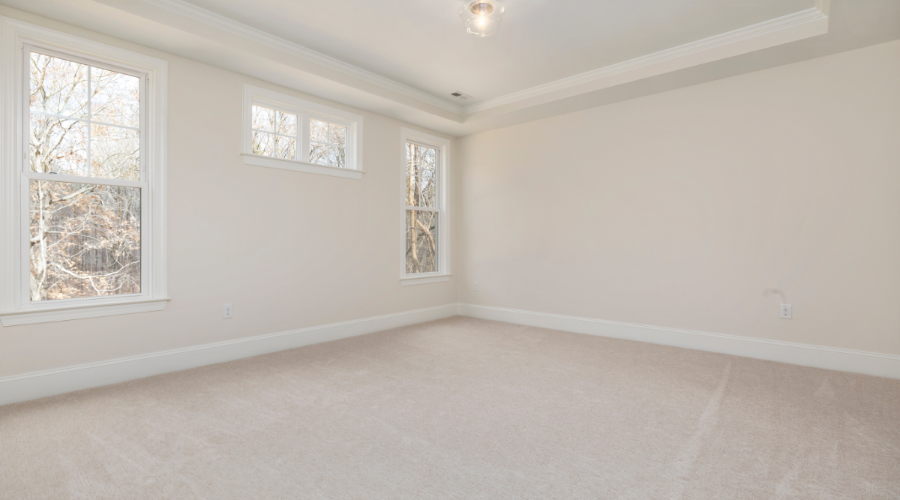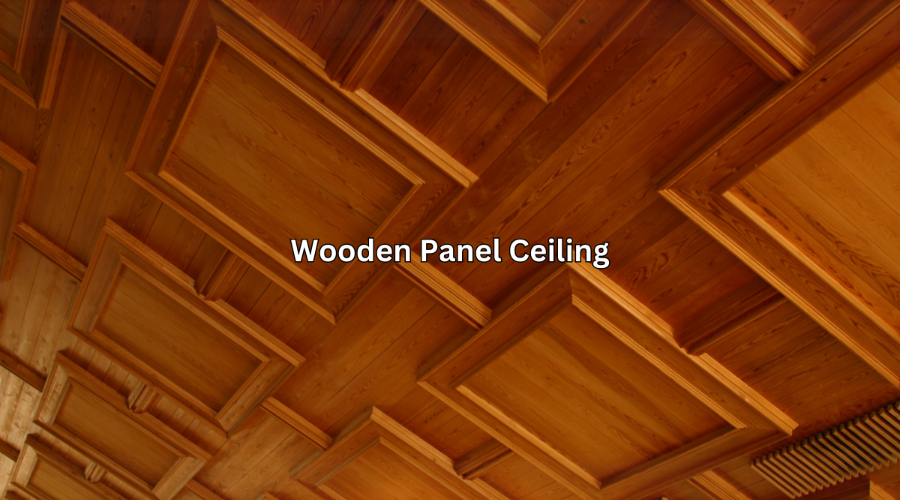False ceilings are an important aspect of modern interior decoration, making spaces more aesthetically pleasing as well as serving practical purposes. They give added value to the overall ambience and provide convenient amenities, whether in the grand lobby of a hotel, an active office space, or a cosy lounge area. One prevalent inquiry that is always asked by many people is whether false ceilings make a room cool.
In this Brick & Bolt article, we will describe how false ceilings reduce heat, the installation process, and their features. This information can help you decide if a false ceiling would be suitable for your room.
What are False Ceilings?
In modern construction, false ceilings are an extra layer that forms a gap beneath the main ceiling to keep the space cool where it is installed. They improve lighting, reduce noise, and promote better air circulation. They are constructed of materials like gypsum, POP, wood, or metal. False ceilings also save energy by preventing heat from entering the space.
They hide electric wires and uneven surfaces and make rooms appear neat and modern. They can be installed in buildings, offices, and homes and incorporate innovative designs with recessed lighting or cove lighting. This ensures that buildings and offices look smart and welcoming.
How Do False Ceilings Really Lower Heat?
False ceilings decrease the heat by hindering direct heat transfer and developing an air-insulating gap between the ceiling and the room. Materials such as gypsum, POP, and mineral fibre help to maintain moderate temperatures as they absorb less heat. Some false ceilings with reflective coatings prevents the heat from entering your space.
In particular, ventilated designs improve airflow by reducing trapped heat. Additionally, LED lighting that emits less heat than traditional bulbs is also included. These features can optimise air conditioning in warmer climates efficiently within your homes and workplaces.
Modern False Ceiling Design Ideas for Homes & Offices to Reduce Heat
False ceilings not only enhance aesthetics but also help in temperature control by reducing heat. Here are some innovative designs for homes and offices:
For Homes
- Gypsum Layered Ceiling:

Double-layered gypsum ceilings trap heat and provide better insulation.
- Wooden Panel Ceiling:

Wooden planks with air gaps add warmth and prevent excess heat absorption.
- Perforated Ceiling Panels:
Enhances ventilation while maintaining a stylish look.
- Green Ceiling (Living Ceiling):
Embedded plants improve insulation and keep the air cool.
- Recessed False Ceiling with LED Lights:
Reduces direct lighting heat while offering a sleek finish.
For Offices
- Mineral Fiber Grid Ceiling:
Highly effective in heat insulation and noise reduction.
- Metallic False Ceiling with Insulation:
Reflects heat while maintaining a professional appearance.
- Slatted Wooden Ceiling:
Promotes air circulation and eliminates the heat trapped inside.
- Reflective POP Ceilings:
Utilise heat-reflecting coatings to maintain cooler interiors.
- Ventilated False Ceiling with Air Gaps:
Improve airflow and reduce heat generation in large areas.
How Long Does it Take to Install False Ceiling?
The duration to fit a false ceiling varies with the material, complexity of design, and size of the room.
- Gypsum False Ceiling takes 3 to 5 days for a standard-sized room (fast and easy installation).
- POP (Plaster of Paris) False Ceiling requires 5 to 10 days (takes longer due to drying time).
- Mineral Fiber Ceiling needs 2 to 4 days (quick installation, used in offices).
- Wooden False Ceiling requires 7 to 14 days (longer due to cutting, finishing, and polishing).
- Thermocol Ceiling takes 2 to 3 days (lightweight and easy to install).
Design complexity, integration of light, and surface preparation are factors that could prolong the timeline. A plain flat false ceiling is quicker, but elaborate patterns, layered designs, or custom work require more time. With proper planning, the installation is faster and smoother.
Can a False Ceiling be Installed in an Existing House to Reduce Heat?
Yes, you can install a false ceiling in an existing house to reduce heat. It is a common renovation method to improve insulation and enhance aesthetics. However, a few factors must be considered before installation:
Things to Consider:
- Ceiling Height
A false ceiling lowers the original ceiling height by 4 to 6 inches. Ensure enough headroom remains.
- Material Choice
Use gypsum, mineral fibre or POP, which provide good heat insulation.
- Structural Strength
The existing ceiling should be strong enough to support the false ceiling framework.
- Lighting & Ventilation
Plan for LED lights, vents, or AC ducts to optimise cooling.
- Moisture or Leaks
Check for roof leaks or moisture issues before installation to prevent damage; use moisture-resistant materials in humid areas.
- Installation Time
Installation takes 3 to 10 days, depending on complexity.
Cost Comparison: Installing a False Ceiling in an Existing Structure vs. a New Building
| Factors | Existing Structure (Retrofitting) | New Building Construction |
| Material Cost (per sq. ft.) | ₹60 – ₹250 | ₹50 – ₹200 (slightly lower due to bulk installation) |
| Labour Charges (per sq. ft.) | ₹20 – ₹50 (higher due to modifications) | ₹15 – ₹40 (lower as it’s planned during construction) |
| Time Required | 3 – 10 days (depending on modifications) | 2 – 7 days (faster since integrated into construction) |
| Ceiling Modification Costs | ₹5,000 – ₹15,000 (adjustments needed in existing structure) | Not applicable |
| Lighting & Wiring Costs | ₹2,000 – ₹10,000 (may require rewiring) | ₹1,500 – ₹8,000 (planned during construction) |
| Customisation Charges | ₹50 – ₹150 per sq. ft. | ₹40 – ₹120 per sq. ft. |
| Total Estimated Cost for 100 sq. ft. | ₹8,000 – ₹25,000 | ₹7,000 – ₹20,000 |
Key Differences:
- Retrofitting in an existing house is costlier due to additional labour, modifications, and rewiring needs.
- New buildings have lower costs as the false ceiling is planned during construction.
- Installation is faster in new buildings because it’s done before final finishes.
Conclusion
If you want to save energy costs and keep your house cooler, a false ceiling is a wise investment. It keeps rooms more comfortable by trapping heat in addition to adding style. Use the right material and design to insulate better, minimising the demand for over-cooling. With proper maintenance and installation, a false ceiling brings both style and functionality, making it a long-term solution for offices and homes. For comfort or fashion, it’s an excellent means of beautifying your space while enhancing energy efficiency.

